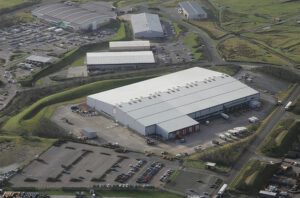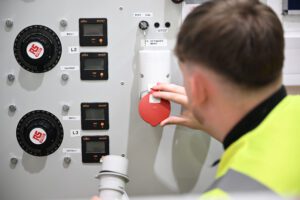The pressure is on for UK businesses to shrink their carbon footprint. They’re a crucial part of achieving the government’s ambitious net-zero greenhouse gas emissions target by 2050.
That’s why carbon offsetting is gaining traction. But is it a genuine solution, or just a way to maintain the status quo while appearing eco-conscious?
In this article, we’ll delve into the concept of carbon offsetting and question whether it’s the right path to a truly sustainable future.
What is Carbon Offsetting?
Carbon offsetting is built on the idea of compensating for your carbon dioxide (CO2) emissions. You invest in projects that reduce or remove an equivalent amount of greenhouse gases from the atmosphere. It’s essentially a balancing act to counteract the environmental impact of activities like transportation and manufacturing.
Carbon offsetting projects can encompass reforestation, renewable energy initiatives, and waste and landfill management. By supporting these projects, businesses can showcase their commitment to mitigating climate change and promoting environmental sustainability.
Does Carbon Offsetting Actually Work?
The effectiveness of carbon offsetting is a hot topic among environmentalists and policymakers. While it can play a role in reducing overall greenhouse gas emissions, its success hinges on several factors.
The quality and integrity of the offset project are paramount. Projects must adhere to rigorous standards to ensure they genuinely reduce or remove carbon emissions. Offsetting should also go above and beyond what would have happened without the offset funds, guaranteeing real emissions reductions.
The most contentious point is the long-term impact of offset projects, which remains uncertain. Many argue that the focus should be on direct emission reductions, echoing the age-old wisdom that “prevention is better than cure.”
Alternatives to Carbon Offsetting
- Direct Emissions Reduction: Instead of offsetting emissions after the fact, businesses should prioritise reducing emissions at the source. This involves implementing energy-efficient solutions, adopting cleaner technologies, and optimising processes to minimise their carbon footprint.
- Voltage optimisation is an innovative solution that tackles emissions at the source. By optimising the voltage supplied to electrical equipment, this technology ensures appliances operate at their peak efficiency, preventing unnecessary energy waste and reducing environmental impact.
- Switching to Renewable Energy Sources: Transitioning to renewable energy sources like solar, wind, and hydroelectric power can significantly reduce carbon emissions associated with energy consumption.
- Energy Conservation Practices: Business leaders can foster a culture of energy conservation among employees and consumers. Simple actions like turning off lights, using energy-efficient appliances, and optimising heating and cooling systems can lead to substantial energy savings.
- Carbon Capture and Storage (CCS): Larger companies can invest in cutting-edge technologies that capture carbon dioxide emissions from industrial processes or power plants and store them underground, preventing their release into the atmosphere.
- Green Supply Chain Management: Collaborate with suppliers to optimise supply chain operations and reduce emissions throughout the entire chain. This might involve sourcing materials from sustainable sources, reviewing transportation routes, and promoting eco-friendly packaging.
Partner with Zeron
If you’re ready to help your clients reduce their carbon emissions at the source, rather than offsetting them later, become a Zeron partner.
We provide comprehensive training to ensure you understand exactly how VO technology works, along with ongoing marketing and technical support.
To learn more about partnering with Zeron, contact our team today. We’ll guide you through the entire process.
Zeron. More power to the planet.






